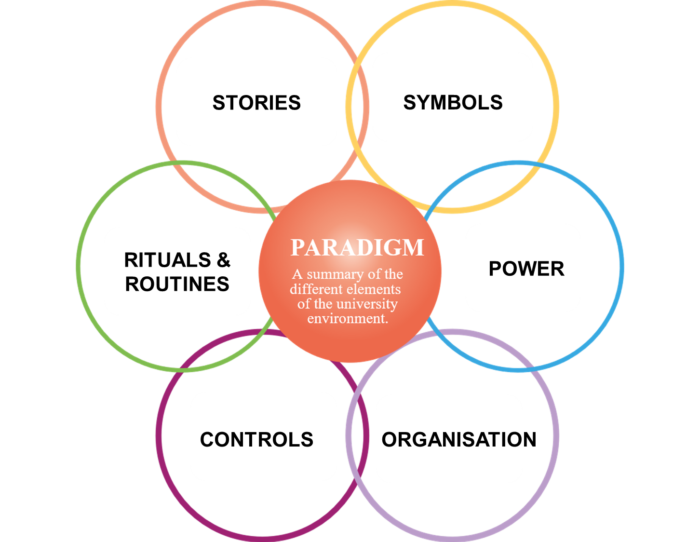Cultural Web Analysis
Culture can have a huge impact on whether change will be successfully adopted. Changes to the culture itself may be required in order to successfully embed a change.
A Cultural Web Analysis is a useful tool for considering whether cultural change needs to be implemented and what gaps / assumptions an organisation currently has which may impact the implementation of a change.
This tool can be used to understand the current culture of the University as well as the desired culture to help identify any gaps between the two.

Source: Developed by Gerry Johnson and Kevan Scholes (1992)
The paradigm at the centre of the model is the set of concepts, thought patterns or approaches that make up the particular 'world view' context, which in this case would be the different elements of the University environment. To develop the paradigm, you might consider several different elements including:
- Symbols - visual representations of the University such as logo, branding, offices, dress code.
- Power - the power and influences in the University and where they reside
- Organisation - formal structure (defined on the organisation chart) and informal (others who contributions are highly valued).
- Controls - systems in place to control the University such as financial, quality, rewards.
- Rituals and Routines - individual and organisation values and ways of working.
- Stories - past events and things people have talked about both internally and externally.
Download the Cultural Web Analysis template
Hints & Tips
- Work around all the outside factors analysing the current environment to build up a picture of the current culture.
- Repeat the process considering the future desired culture.
- Analyse the two pictures to identify where the gaps are.
- Create a plan for how to address them.
- This can be used on a sliding scale from analysing the culture of a single team or faculty to the entire University.
- A Gap Analysis template would be helpful to be used with this to ensure gaps identified are considered and tracked. This tool is also available to download from the website.
- Discuss your intention to hold this workshop with the Delivering Results team or PMO to receive further advice on attendees / facilitation.
